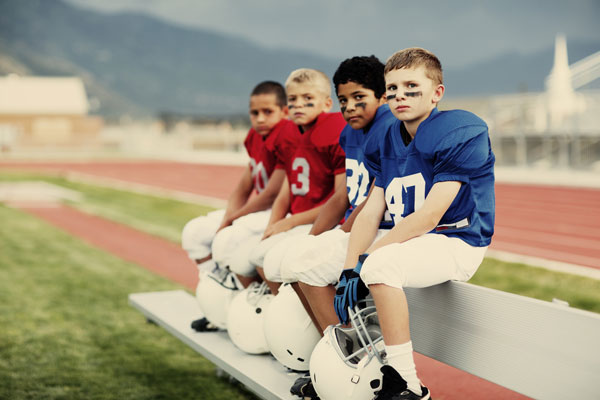
What parent doesn't like to see a child excel in whatever that child is passionate about? It is a natural thing for parents to want their kids to do well. We see it on sports fields all the time. Parents do not want their children just to show up; they want them to do their best. And of course, in the back of every parent's mind are worries that an injury is just around the corner.
Mixing kids and sports is a recipe for injury. The fact is that kids get hurt. This suggests that there is a fine line between fun and safety when you are talking about competitive sports. How do you walk that line? The best you can; there is nothing black and white about it. You try to make sure the kids are as safe as they can be without taking away the opportunity to enjoy what they are doing.
The Right Safety Equipment
Most competitive sports utilise at least a minimum amount of safety equipment to keep young athletes from unnecessarily injuring themselves. Here in the UK, for example, football is everything. As such, we encourage players and coaches to make use of basic safety equipment. Shin pads are a great example.
We also encourage team managers to keep things like football first aid bags on hand. We encourage them to make sure the kids are drinking plenty of water and, when necessary, taking breaks to catch their breath.
If you are running an American football team, the amount of safety equipment kids wear is quite impressive. Helmets and a full range of pads protect players against potentially dangerous collisions. The same is true for ice hockey. Hockey players wear helmets, pads, and protective gloves.
The point here is to not neglect safety equipment. The equipment is there for the benefit of the athletes, even if they do not recognise said benefits right away.
Learning to Play Safely
Safety equipment is just the start of keeping young athletes safe during competition. Equally important is learning how to play safely. And that all goes back to technique. There are certain techniques in every sport that, when implemented, reduce the risk of injury.
Blocking a freekick on the football pitch is a lot safer when players position themselves in the right spot and protect themselves by folding their arms in front of their bodies. There are certain tackling techniques we teach athletes to ensure they are not injuring opposing players.
This may be the most important aspect of maintaining a safe environment without spoiling the fun. Unfortunately, the competitive desire sometimes becomes so intense that playing safely gets ignored. There are times when winning becomes more important than anything else. Those are the times when injuries are most likely to occur.
Coaches and other team leaders have a responsibility to teach young athletes about proper sportsmanship. Winning isn't everything. If a team's ultimate goal is to win even at the expense of injuring opposing players, there is something wrong.
Nutrition and Conditioning
One final aspect to consider is nutrition and conditioning. We do not normally talk about these things at length as they pertain to younger athletes, but we probably should. Both nutrition and conditioning can go a long way toward preventing injuries.
Good nutrition gives the body the fuel it needs to maintain optimal health. The healthier an athlete is during a competition, the less likely he or she is to suffer a devastating injury. Moreover, good nutrition will serve the youth athlete well into his or her adult years.
In terms of conditioning, it is always a good idea to make sure kids are ready to play before they actually get into the competitive environment. Basic pre-competition conditioning involves warm-up exercises, stretching, and so forth. Ongoing conditioning occurs off the field through planned activities (like practices) managed by parents and coaches.
Injuries Will Still Occur
Parents, coaches, and team leaders can take all of the steps mentioned here and still not prevent every single injury. This is key to walking that fine line between fun and safety. As much as we want to protect our little ones from every possible danger, we cannot. We do not live in a perfect world.
The fact is that there will always be the risk of injury when kids engage in sporting activities. It is part and parcel of sports. So while it's appropriate for parents and coaches to take reasonable steps to ensure player safety, going too far can make sports unenjoyable. Kids who do not enjoy what they are doing will simply not do it.
The fine line between fun and safety in sports is not easy to walk. That is why it is called a 'fine line'. But if you can find the right balance between keeping kids safe and encouraging their enjoyment of sports, great things can happen.



























